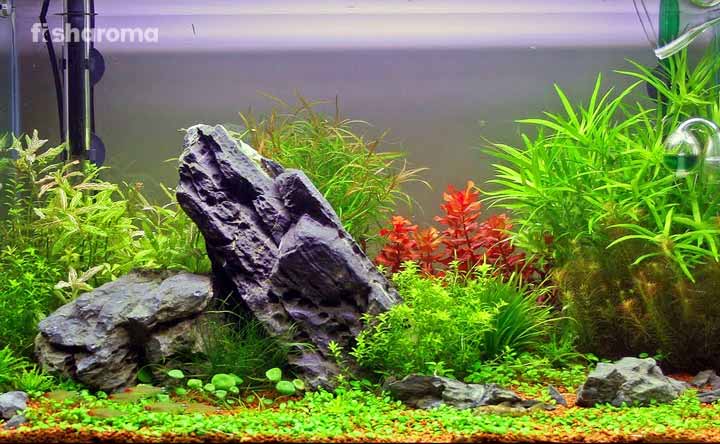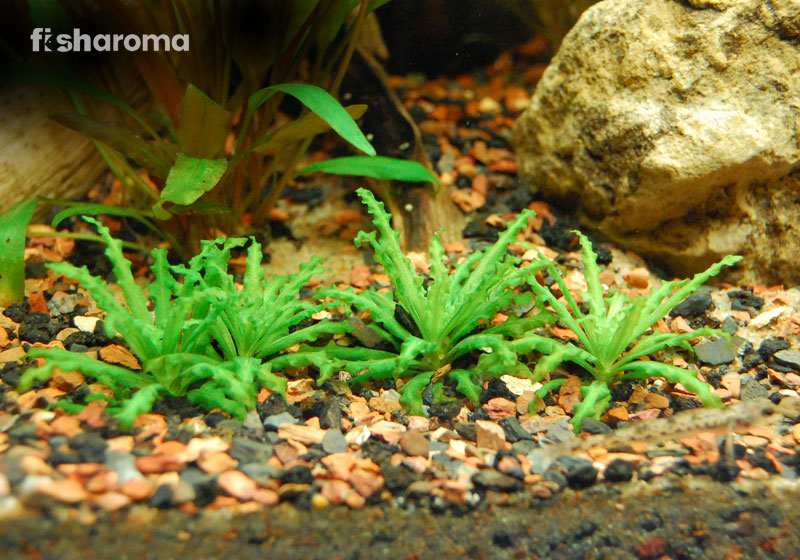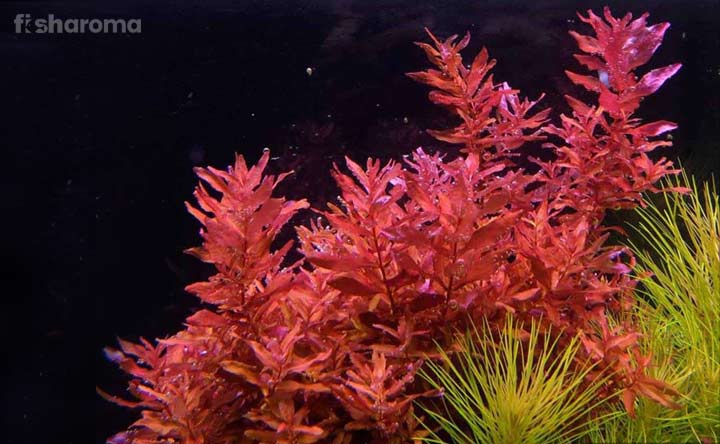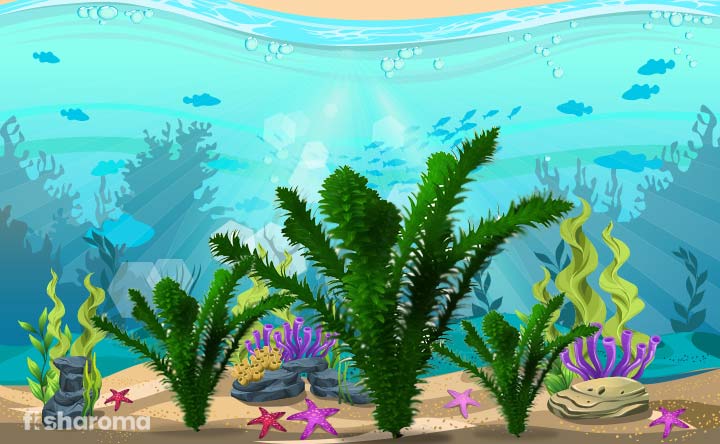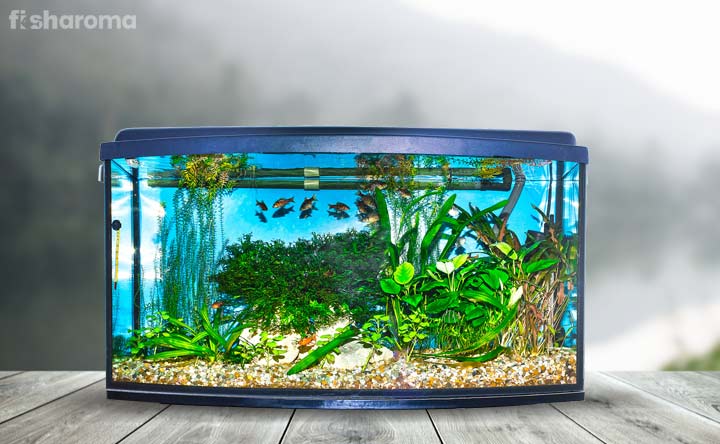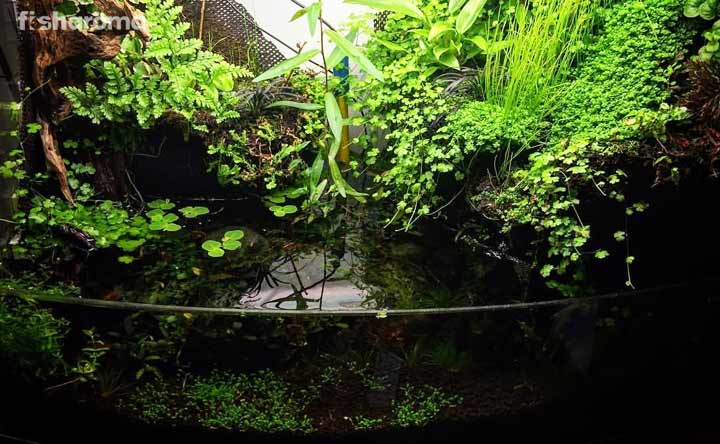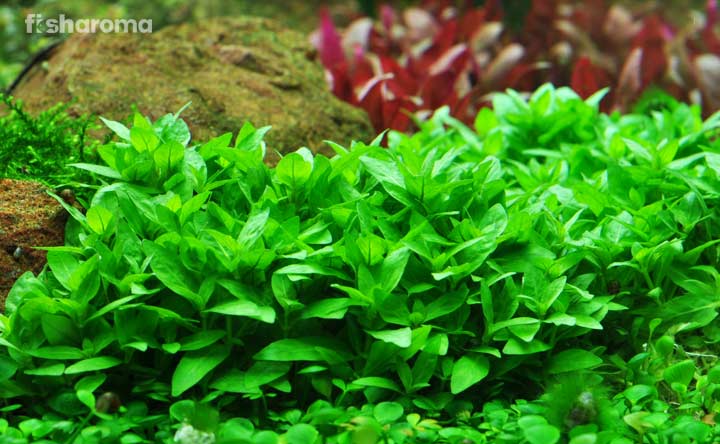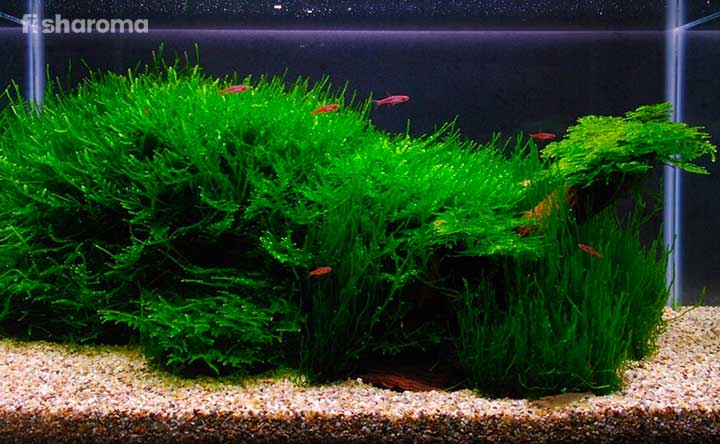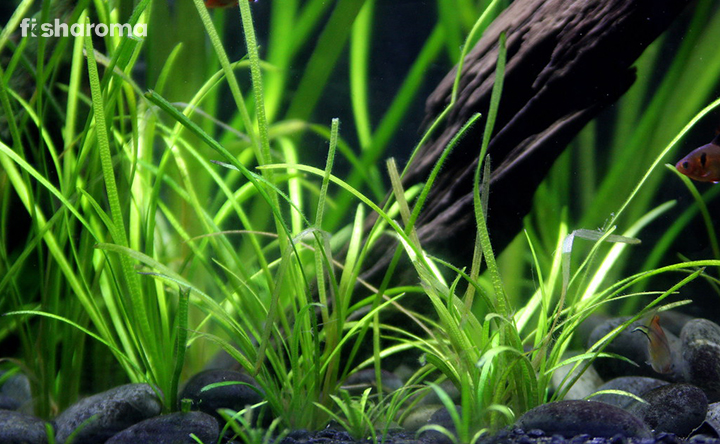Guppy Grass Details And How To Take Care Of It
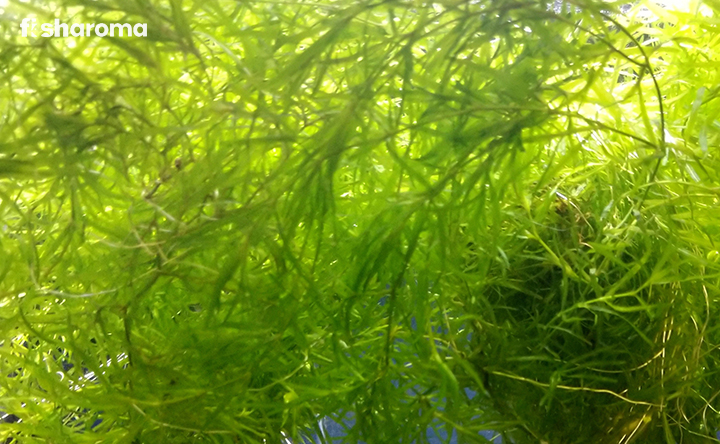
- Origin And Habitat of Guppy Grass
- Appearance Of Guppy Grass
- Benefits Of Keeping Guppy Grass Inside Your Tank
- Tank Requirements Of Guppy Grass
- Water Type For Guppy Grass
- Plantation Procedure Of Guppy Grass
- Propagation Of Guppy Grass
- Care And Maintenance Of Guppy Grass
- Compatibility Of Guppy Grass
- Diseases And Treatments Of Guppy Grass
- Summary
Guppy Grass is a freshwater species that is famous for its rapid growth. Despite that, it is a prominent name in the aquatic plant world, because of its many advantages (to be discussed in the benefits section later). This plant is low maintenance besides being a hardy one. Let’s delve into the deeper section of its care guide and let us help you if you plan to get one for your tank. This plant is a go-to option for freshwater aquarists, as the species offers shelters and hideouts to many small shoaling species.
Let us take you to a detailed section where you can find all the nitty-gritty that goes into taking care of the Guppy Grass.
Key Specification Of Guppy Grass
The following chart is an easy shortcut to get into the details about the species.
| Other Names | Najas Grass, Common Water Nymph, Southern Water Nymph |
| Origin | North America |
| Colours | Green |
| Size | Around 36 inches |
| Growth Rate | Quick |
| Water Type | Freshwater |
| Propagation | Stem Cutting |
| Maintenance Requirements | Moderately Easy |
| Lighting | Moderate |
| Placement Condition | Mostly floating and sometimes anchored |
Overview
The popular grass species, scientifically known as Najas guadalupensis, belongs to the family of Hydrocharitaceae. This North American species is also a part of Najas genus and it is mostly green, either dark or light. The size of the grass can grow to be around 36 inches and its growth tendency is quite high and random. Mostly, people keep such grass a floating aquascape but some can choose to make it anchored by weighing it down to the substrate. However, the easy to care species is an enticing one, especially when someone is thinking about decorating a freshwater fish tank.
Origin And Habitat Of Guppy Grass
This is indigenous to North American countries of Canada where its distribution is stretched from Quebec to Alberta. It is found in the South American country of Mexico. Apart from this, the West Indies, and the United States of America also have seen natural occurrences of the grass. This species has further been brought up in some Asian countries, where now it grows naturally and these are Japan, Palestine and Israel. Apart from these, the grass is fairly common in Central America.
The habitat of Guppy Grass includes brackish water and freshwater ponds, canals, ditches, and streams. These water bodies where the grass is submerged can either be still water or the current could be fast, so there is variation in terms of its water requirements.
Appearance Of Guppy Grass
Colour And Shape
The grass is either dark green or light green with multiple branches. There are some little flowers on this grass that blossom at a certain time. This grass has slender and thin stems, extended branches, and narrow leaves. The white rooted grass is overall tall with flexible leaves which have unicellular teeth.
Size
While the entire grass can be sized around 36 inches, its leaves are around 1.18 inches in length and 0.04 -0.09 inches in width.
Subspecies Of Guppy Grass
On the basis of their origin and type, there are popular 4 subspecies of the Guppy Grass and these are as follows
- Najas guadalupensis subsp. olivacea
- Najas guadalupensis subsp. Muenscheri
- Najas guadalupensis subsp. guadalupensis
- Najas guadalupensis subsp. floridana
These four subspecies are widely distributed in Quebec, Ontario, and Manitoba of Canada. While in the United States of America, they are found in New York State, Alabama, Georgia, Florida, Michigan, Iowa, and Minnesota. Some of these subspecies are common in Japan as well.
Benefits Of Keeping Guppy Grass Inside Your Tank
Guppy Grass is not an artificial ornamental grass that can enhance the beauty of the tank, rather it improves the inhabitant fishes’ quality of life on diverse sectors, inside the tank. Apart from the basic oxygen production, these grasses, when planted or kept inside an aquarium are known for purifying the water.
Acting As A Rich Food Source
In the freshwater world, there are many herbivorous and omnivorous fishes who enjoy plant-based diets besides their fleshy treats. This grass is an excellent nutritious option for them as they enjoy munching on the tasty grass, easily loitering around the tank. So, keeping the grass would make your feeding duty less of a hassle, and much of a utility to say the least.
You can opt for Guppy Grass inside your tank especially when you plan on keeping different types of Goldfishes, Cichlids, and Silver Dollars. Not only adult fishes but there are many newborn fishes or “fry” who would necessarily feed on the microorganisms or biofilm that may be found on the same grass.
Acting As A Hiding Retreat
In a community fish tank, tiny to medium-sized fishes sometimes prefer to hide from any potential predator or rather aggressive fishes. Although in a tank only those fishes are kept together who don’t have any temperamental issues, still, there might be some bullying. Especially during the breeding time when males are usually rough to come across. For that reason, Guppy Grass is a perfect solution for those victims of male fishes’ or scared fishes, who would love to take frequent shelter behind the plants.
Apart from these, some fishes enjoy some alone time amidst aquatic plants, and Guppy Grass is a tall one, so it is a wonderful option for them. Moreover, there are some territorial fishes who can cohabit in the same tank, only if there are enough plants. As that would hide them from each other’s sight, and Guppy Grass is a must-have for those freshwater tanks.
Acting As A Nutrient Repellant
There are lots of water nutrients like Ammonia, heavy metals, Nitrite, and Nitrate that are detrimental to water in some cases. Guppy Grass can reduce those simply by its existence and that in turn, saves the fish from all the toxins.
Acting As An Algae Remover
The harmful nutrients (just mentioned above) are actually good for algae production, so while Guppy Grass reduces those nutrients, it actually keeps the algae growth at bay. This is relieving news for aquarists because if algae overtake a tank and cleaning the tank becomes a tough nut to crack.
Acting As An Ornamental Ingredient
Any tank needs to be as per the liking or habitat of the fishes who are going to stay inside the tank. The fishes feel like their natural setting, especially those who come from rainforest river basins. Such grasses also offer a rich backdrop for the tank, against which colourful schooling fishes look ethereal.
Acting as a Spawning Base
Many fishes like Tetras require plants to lay their eggs on, and Guppy Grass is widely used inside a breeding tank. The fishes could be livebearers or egg-scatterers, but they use the Guppy Grass to their advantage. So, apart from the standard tank, this grass is an ideal option for a spawning base.
Acting As An Aeration Agent
The green plants oxygenate the entire tank, meaning it works just like a filter, especially for those fishes who need a lot of oxygen. This is by default, an associated benefit of any green plant and without any exception, the Guppy Grass purifies the tank as well.
Tank Requirements Of Guppy Grass
Guppy Grass needs certain parameters for smooth thriving. There are lots of things that you must ensure.
Tank Size
Since these plants are prone to grow faster, you need to keep them in moderately-sized tanks. They can inhabit small or nano tanks, but we don’t recommend that as well. At least, try for 15-20 gallons of tank, so that your fishes and plants can peacefully coexist.
Substrate
The plant doesn’t need any particular bottom condition, because most of the time the plant is used as a floating one. You can definitely keep it as an anchored one, planted on the substrate, but for that, you don’t need to provide any specific type of substrate.
Lighting
The grass needs soft lighting mostly because, otherwise, it might not grow as good as it should be. The problem is that you are not going to house the plant alone, and there might be other plants as well. So, you have to keep every species’ requirements satisfied and it is best to keep all those fishes who need such smooth lighting.
Here we are giving two types of parameters, one on the basis of exposure time and the type of light that you need to provide.
Keep the light exposure time within 8-12 hours per day. Though hardy, more exposure will leave the plant in damaged conditions for sure.
As far as lighting type is concerned, extreme low lights are not suitable because that will not bring out its proper colour, so you can’t deprive the grass from its adequate lighting requirements. Again, if you place bright lights, the greenness will eventually change its colour to redness and then result in burning. You need to look out if anything of that sort is happening because you have to lessen the light exposure accordingly.
Fertilizer
The grass doesn’t need CO2 to be infused externally, nor does it need any fertilizer for boosting its growth. It grows under random circumstances without any proper conditioning, but sometimes if the water is softer than its usual range, then some aquarists use liquid fertilizers. That is the standard method but don’t opt for it until required.
Cleaning Method
The tank that you keep your Guppy Grass in, mostly stays clean because of the algae reduction properties of the plant. Still, you need to clean the tank on your own to some extent. Trimming and pruning of the plant is important and removing all the residues of the fish food is also of much importance. We have already shared the proper timing method of the grass just above, so you need to take care of that. Otherwise, the tank is free of all toxins and algae as long as a healthy amount of Guppy Grass is there.
Ornaments and substrates need to be cleaned, less for the plant, and more for the fishes. You should check the filter, the lid, the glass of the tank and clean them accordingly. As far as trimming is considered, you need to do it on a weekly basis otherwise the tank might be overflowed with all sorts of Guppy Grass growing from all over the place. Even if you think the weekly trimming is not possible for you, do it at least once every two weeks.
Replacement Procedure Of Water
As we have already said that the plant, by default keeps the water clean, it is still best to change it partially. The change can be done every week or once in every two weeks so that the fish can adjust them to the new water. The standard measurement for water changing is 15% water replacement on a biweekly basis.
Water Type For Guppy Grass
By this time, you already know that Guppy Grass belongs to the freshwater plant category. So, before setting up a tank for it, you must know what are other conditions it needs, more specifically the parameters.
Temperature
Although the grass can withstand a wide range of temperature variations, you should always provide what is best for it. The ideal range for the plant is 20-26 Degrees Celsius where it can properly grow at its best form. Otherwise, the plant can endure 10-30 Degrees Celsius to say the least.
pH Level
Guppy Grass is well-maintained if the water has pH level in a range of 6-7. It can survive when the pH is 8 as well, but that is not recommended.
Hardness
The carbonate hardness of tank water should be 5-12 dKH.
Salinity
The water salinity should be kept within 8 ppt, but it can extend and the plant will have no problem with that either.
Plantation Procedure Of Guppy Grass
As previously mentioned, Guppy Grasses are mostly floating plants. There are occasional instances where people use them as planted ones.
Anchored Guppy Grass
The grass stem should be separated and then you have to plant them a couple of inches into the bottom or the substrate of the trank. There is no rocket science involved in this process. The reasons you need to make sure the plantation is strong are
- The grass doesn’t have strength in its roots, so if the plantation is not strong they will be floating soon after the procedure.
- If the tank has fish like different types of Goldfishes, Silver Dollars, and Cichlids, then ensuring the strong plantation is mandatory. This is because these fishes are prone to uproot and eat the grasses.
Floated Guppy Grass
If you are keeping them afloat then divide the grass stem carefully and then spread them manually. That’s it!
Propagation Of Guppy Grass
This is one of the easiest of all as the grass voluntarily propagates itself when no one is setting a conducive set-up for it. You have to cut some pieces of the Guppy Grass and let it float inside the tank or wherever you wish it to grow.
Care And Maintenance of Guppy Grass
There are certain things that you need to ponder about prior to opting for Guppy Grass. The main factor is that as much as the maintenance is, there are certain aspects that need special attention.
Trimming
The growth rate of Guppy Grass is so fast that if it is not trimmed down on a certain basis, it can be all over the tank in no time. You must adhere to daily trimming, although that comes under the maintenance section, still, it is important enough to be stressed. The overgrown plants will certainly clutter the tank and it would be overwhelming for the fishes. There will be space crunch and that can subsequently lead to stress and problem of the fish.
As far as the trimming is concerned, you have to be extremely careful because of its fast propagation. If you don’t clear all the cut parts of the tree from the aquarium it can still grow from a single small piece and that can itself be a source or potential Guppy Grass growth.
Disposal
Due to its rapid growth, it can overtake any place, even it gets the slightest of water. So, if you wish to get rid of it, don’t just pack it and throw it inside a plastic carry bag and dispose off. That will be bad for the environment because of the plastic, despite the disposal process being full proof. There are three safe ways that will ensure that Guppy Grass is gone for good, without invading other spaces. Following are some ways that will take care of its proper disposal.
- You have to use bleach soak so that it can kill the species and then you can throw it away.
- You may have to bury the plants in order to dispose off them.
Compatibility Of Guppy Grass
The Guppy Grass is good for most freshwater species, but they are to be kept with those who need them and use them to their advantage. There is one aesthetic factor as well because colourful tiny freshwater species look good with the Guppy Grass as their backdrops. Actually, almost all kinds of freshwater fishes can have grass inside their tank, still, it is better to know who will actually be benefitted from this.
Remember that, such grasses will either be the food or the hiding shelter for the fishes, so you have to choose the mates accordingly. We have already mentioned that for some fish species, the Guppy Grass will be a breeding nest. Since the plant can grow to a great extent, fishes who will gorge on the grasses, will not eliminate the species from the tank. The grass will replenish itself in no time.
Suitable Fishes as Tank Mates
- Neon Tetra
- Green Fire Tetra
- Ember Tetra
- Black Skirt Tetra
- Rosy Barbs
- Pygmy Cory Catfish
- Celestial Pearl Danios
- Cardinal Fish
- Royal Pleco
- Snowball Pleco
- Platy
- Silver Dollar Fishes
- Otocinclus Catfish
- Rusty Cichlids
- Types of Goldfishes
- Cardinal Fishes
Suitable Snails as Tank Mates
- Ramshorn Snails
- Malaysian Trumpet Snails
- Japanese Trapdoor Snails
- Mystery Snails
- Nerite Snails
Suitable Shrimps as Tank Mates
- Ghost Shrimps
- Malawa Shrimps
- Crystal Red Shrimps
- Vampire Shrimps
- Snowball Shrimps
- Blue Velvet Shrimps
- Red Cherry Shrimps
- Blue Dream Shrimp
- Bamboo Shrimps
- Blue Bolt Shrimps
- Amano Shrimps
- Blue Tiger Shrimps
Diseases And Treatments Of Guppy Grass
The Guppy Grass takes time to adjust to new habitat so it might be affected by melting, like any other plants. However, you need to give it some time so that it slowly can adapt to its new territory. The grass can have rotten parts if it is not well adjusted to the new water.
Also, there are some pest related problems that can occur if the water condition is not provided. You need to quarantine the plant well before you can keep this inside your tank. There are some bacteria and other things that can be attached to your Guppy Grass as well.
You need to provide bleach therapy so that the new Guppy Grass stays clean and doesn’t risk the tank water while being introduced there. All you have to do is to make a mixture of water and bleach in 20:1 proportion and give a bleach dip to your Guppy Grass. Excess bleach will ruin the plant so you have to be extra careful about the quantity of the bleach. Immerse the plant inside the solution and then keep it like that for around 1 minute. Take this out and rinse it off so that there is no bleach on the plant anymore.
Summary
The Guppy Grass is a fantastic aquatic plant that grows sooner than expected. Controlling the plant is difficult as you have to trim it on a regular basis. Otherwise, there are no issues as far as taking care of the plant species is concerned. It is always advisable that you should get informed about the need of the plants all before committing yourself to take care of it. This freshwater plant has been known for fish-friendly aquatic grass.
Other Similar Care Guides
- Pogostemon Helferi – The freshwater plant is one of the smallest of all aquatic plants. Propagation of this plant is easy.
- Staurogyne Repens – This plant has a good survival chance in both alkaline and acidic water. This is a freshwater species and maintenance is lucid.
- Water Sprite – With a requirement of moderate lighting, this plant comes with no fuss attached. Fishes love to utilize the plant as their favourite hiding spot.

